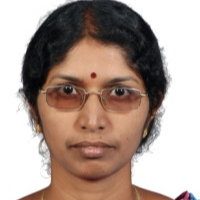
Sujatha Kumaran
Work place: Sathyabama Institute of Science and Technology/Electronics and Instrumentation Engineering, Chennai, 600119, India
E-mail: ksujatha71@gmail.com
Website:
Research Interests: Computational Engineering, Engineering
Biography
Sujatha Kumaran born at Chidambaram, Tamilnadu, India on 17th July 1971. She graduated from Annamalai University in the stream of Electronics and Instrumentation Engineering. She is a Post graduate in Electronics and Control, and obtained her Ph.D from Sathyabama University with a specialization of Signal Processing in the year 2016.
She has more than 20 years of experience in teaching and currently, she is the Professor in the Department of Electronics and Instrumentation at Sathyabama Institute of Science and Technology. She has published around 20 papers in various journals and conferences. She has worked as a Co-Investigator in a R & D project in the field of Ultrasonics in collaboration with IGCAR and successfully completed it. She has guided around 100 students’ projects in the UG level and around 10 in the PG level in various fields.
Author Articles
Performance Analysis of Convolution Code with Variable Constraint Length in Shallow Underwater Acoustic Communication
By Krishnamoorthy Raghavan Narasu Suriyakala C D Ramadevi Rathinasabapathy Marshiana Devaerakkam Sujatha Kumaran
DOI: https://doi.org/10.5815/ijcnis.2019.02.02, Pub. Date: 8 Feb. 2019
One of the most complex environment for the data transmission is the underwater channel. It suffers frequency selective deep fading with serious multi path time delay. The channel also has limited bandwidth. In this paper, the effect of Least Code Weight – Minimum Hamming Distance (LCW-MHD) polynomial code is studied using Viterbi Decoding Algorithm for the shallow Underwater Acoustic Communication (UAC) channel. Two different channels with the range of 100 and 1000 meters are considered for simulation purpose and the channel is designed using Ray Tracing algorithm. For data and image transmission in the channel, three different code rate of 1/2, 1/3 and 1/4 are considered and corresponding Bit Error Rate (BER) are evaluated. Result showed that the BER is least for the LCG-MHD polynomial code.
[...] Read more.Other Articles
Subscribe to receive issue release notifications and newsletters from MECS Press journals